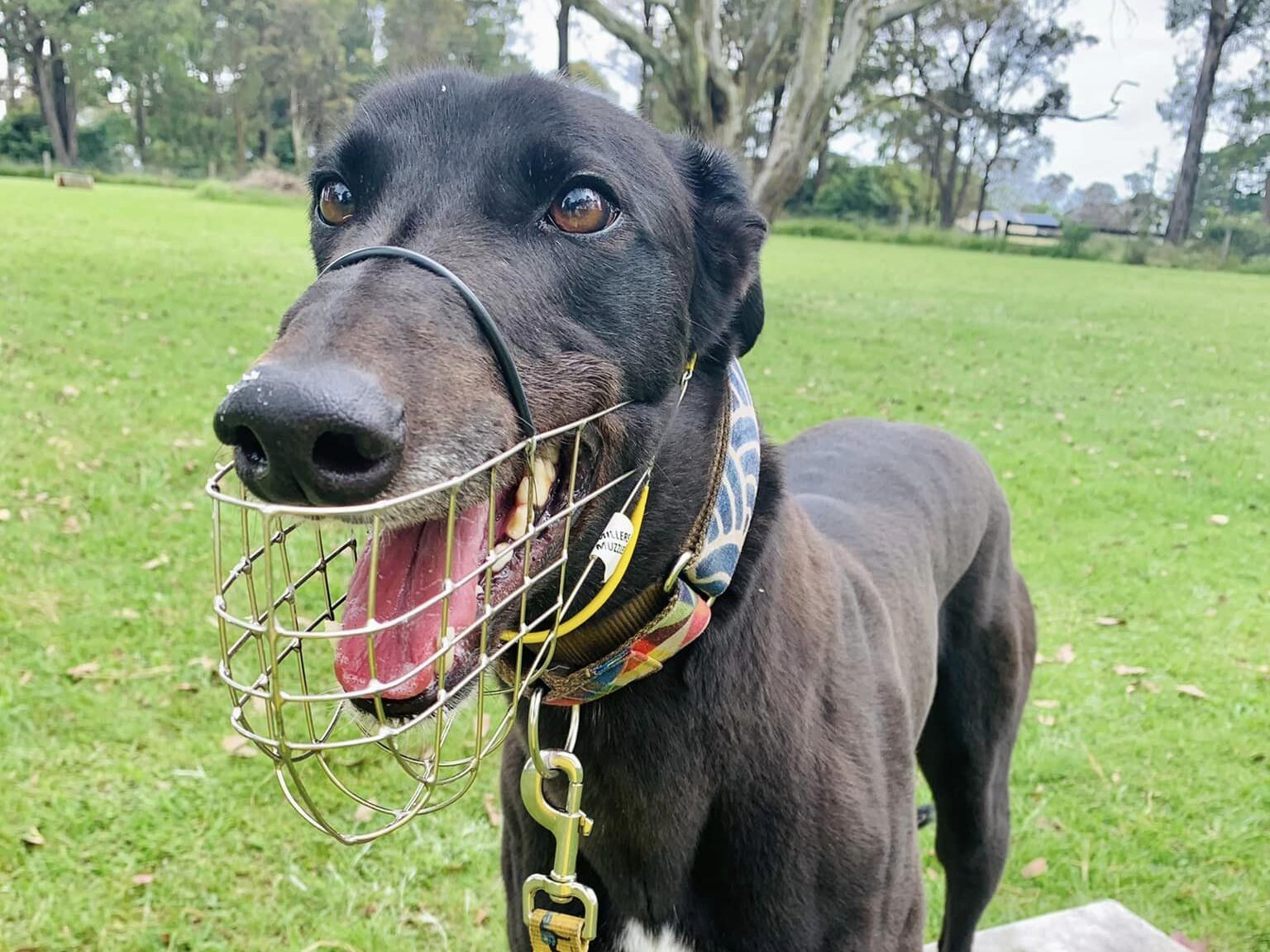Positive reinforcement, or “R+” dog training, is a form of training which uses rewards and praise to encourage desired behaviors. This type of training is distinct from other methods in that there is no physical punishment or force used, only positive reinforcement.

Positive reinforcement is the best choice for training your dog because it is based on the concept of operant conditioning, which is the idea that behaviours can be shaped and modified through the use of rewards and consequences.
Why should we use positive reinforcement training methods?
Other methods of training, such as using physical punishment or intimidation, can lead to poor results and even more problems. Some of the negative consequences of using these methods include increased aggression, anxiety, and other problematic behaviours in your hound. Examples of these outdated techniques include things like yanking on your dog’s lead, spraying them with water, or shouting at them.
Punishment may not effectively address the root cause of the behaviour you are trying to correct, and your hound may continue to engage in the behaviour. Any form of punishment can be physically and emotionally harmful, leading to a decrease in overall wellbeing and damaging your bond, leading to trust issues and fear. Punishment can even cause anxiety and stress in your hound, leading to behavioural problems such as aggression and destructive behaviour – the exact opposite of what you set out to achieve.
In comparison, positive reinforcement is less likely to lead to these behaviours and can actually help to build a strong bond between you and your hound. Positive reinforcement training has been shown to be more effective and humane.
What are some positive training techniques?
Positive training techniques involve rewarding good behaviour rather than punishing bad behaviour.
Examples of positive reinforcement techniques include:
- Verbal Praise
- Physical Affection
- Treats
When positive reinforcement is used, the dog’s body releases hormones that create a feeling of pleasure and reward, which encourages them to repeat the behavior. This technique can also help to develop a bond between the dog and person as the dog learns to associate rewards with the person.
How do you get started?
To use these techniques with your greyhound, you can start by identifying what motivates them, such as treats or praise. Then, you can use these motivators to reinforce good behaviour, such as relaxing calmly on their bed, or coming to you when you call their name. It’s important to be consistent and patient with your training, and to avoid using physical punishment or intimidation. Instead, focus on building a positive relationship based on trust and mutual respect.
With time and practice, positive training techniques can help you and your hound build a strong bond and enjoy a happy, well-behaved life together.
What are the keys to success?
- Environmental management – creating an environment that sets your hound up for success. A dog can’t chew up your shoes if they’re packed away.
- Providing appropriate opportunities for natural behaviours – dogs are gonna dog! Make sure that your hound has an outlet for their natural instincts so that they aren’t becoming frustrated.
- Recognising patterns and preventing problems – if you know that your hound starts barking for their dinner at 5.30pm, then change your schedule up to have them occupied at this time by a short walk or some enrichment. Another option, of course, is to feed them their dinner earlier before they get barky.
- Reinforce your bond – by having many short training sessions and focusing on things that you know your hound can achieve.
- Have high-value treats handy – if your hound is doing something undesirable, quickly distract them away with a favourite treat or even a toy that they love.
Scientific research supports the use of positive reinforcement techniques, with studies showing that these methods can help to reduce the amount of time needed for training, as well as the likelihood of problem behaviors developing. Positive reinforcement can also help to increase the bond between the dog and person, as the dog learns to trust their owner and associate them with positive experiences.
The “alpha theory” for dogs was a popular concept that suggested dogs behaved like wolves in a pack, with an alpha dog leading and the rest of the pack following. This led to many recommendations that suggested ‘showing your dog how is boss’. This theory has been debunked by numerous studies, including ones conducted by the original author – he debunked his own theory! Instead, dogs are social animals that form relationships with both humans and other dogs based on mutual respect and trust.
It is important to avoid using outdated and harmful training techniques that rely on dominance, and instead focus on positive reinforcement and building a strong bond of trust with your hound.
How do you find force-free trainer?
If you need help at any time with your training, we highly recommend engaging a force-free trainer or behaviour consultant.
Here are some things to look out for when looking for a trainer in your area:
- Look for trainers that use positive and reward-based training!
- Check out their website – do they use terms like dominance, alphas and packs? Do they advertise methods that use shock, pain, choke collars, fear, or physical force? If yes, it’s best to look elsewhere.
- Confirm if they qualifications, and that they are from reputable sources.
If you adopted through Greyhound Rescue, please get in touch with your adoption coordinator. They can supply you with a list of trainers we highly recommend.

